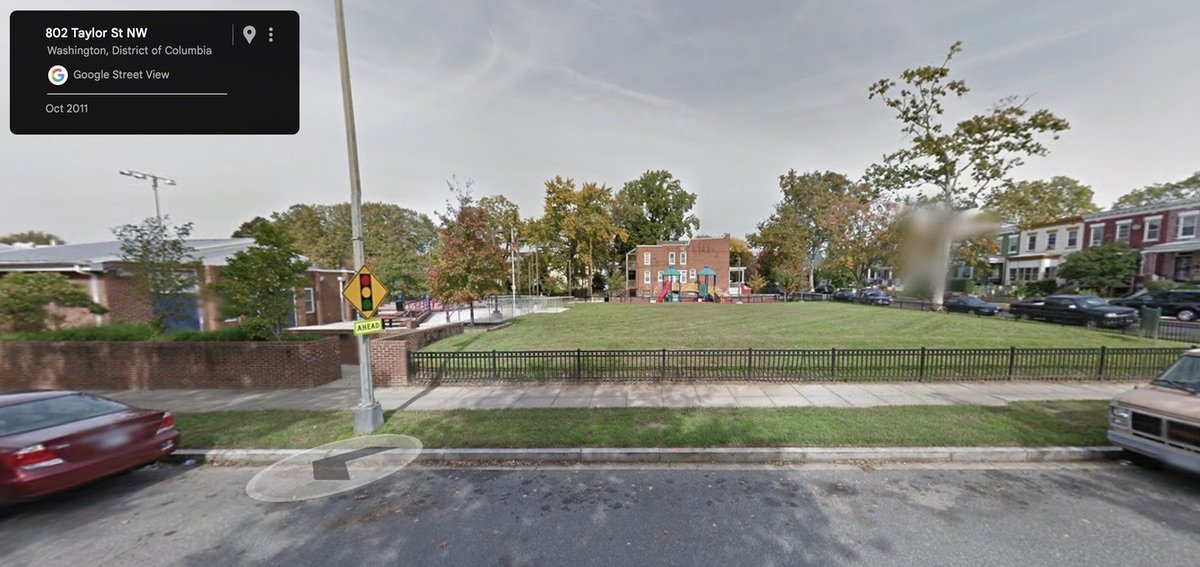Are pop-backs the new pop-ups? The next renovation controversy.
/Pop-back renovation on Grant Circle in Petworth
As housing prices increase in Petworth, purchasing homes that are not astronomical in price is becoming harder. Ten years ago you could purchase an unrenovated single-family townhouse in Petworth for $200-250,000 (if not less). Today, an unrenovated home can sell from $400,000 to upwards of $700,000, depending upon location. (In this case, unrenovated means a house that hasn't been updated in 40+ years.) Fully renovated homes, (e.g., flipped homes), sell for $700,000 to close to a million dollars in some areas.
DC is seeing an average of 1,000 new residents each month -- they all want a place to live. People already renting in the DC area who want to own are feeling the pressure as well. With prices moving up in Petworth, condos and apartments in the neighborhood become more attractive to first-time home-buyers and renters. Developers and flippers are well aware of the population pressure and tight real estate inventory. That's why we're seeing single-family townhouses on residential blocks completely gutted and turned into multi-unit condos, and detached homes razed to the ground, and multi-unit rowhouses being built on the land. Each condo can then be sold for $400-500,000. Incredibly expensive for a one- or two-level condo, but realistically, for a 1,500 sq foot, 2 bedroom, 2 bath home, it's more "obtainable" than a $700,000+ single-family home.
16 Grant Circle, which was a single-family detached home, torn down to build 6 units.
This topic doesn't begin to touch the concerns over Inclusionary Zoning and affordable housing. Smaller renovations aren't required to provide affordable designated units -- only larger construction like the redevelopment of 3701 New Hampshire Ave (former Sweet Mango Cafe), which has 3 affordable units, out of 21 total units. The high prices for flipped homes means affordable housing is being marginalized for single-family homes, with lower-wage residents not able to pay large six-figure mortgages. They end up being shut out of the market by the lack of affordable units, or pushed out of the neighborhood when their apartment building goes condo.
Considering the high prices developers are paying to initially obtain property, they're understandably looking to maximize their profit margin as much as possible. However, it's sometimes at the expense of workmanship, use of substandard building materials and even more commonly, at the expense of neighbors. It's a seller's market as well as a buyer-beware market -- you need to be a smart buyer with a good agent who can advise you well. There's some well-done flips out there, and there's some terrible ones, too.
The massive new condo building at 4th and Varnum Street.
This problem of developers who seemingly value highest possible profit over workmanship and constructing homes that fit into an existing community is not new. The issue came to a head last year after residents complained and protested about "pop-ups" and rampant renovations, and the Zoning Board ended up passing new regulations that limited new development to certain guidelines. A win for anti-pop-up protests, aka "Stop the Pop." (Martin Austermuhle from WAMU had an excellent series on bad renovations this year that's worth the read.)
With height restrictions of 35 feet in R4 zoned areas (most of Petworth, with certain exceptions), developers have to get a "Special Exception" from the local Advisory Neighborhood Commission and the Zoning Board to go above the set height limit, or to go beyond 60% lot occupancy. (Caveat: a developer can skip the ANC, but that is frowned upon by the Zoning Board, who considers resident approval and ANC opinion for the special exception request.)
One way developers are looking to circumnavigate the restrictions and avoid the pop-up controversy is to expand the rear of existing properties, in some cases almost doubling the living space of the first two floors of a house. Most of our 100-year old rowhouses all line up along the front and back of the property, meaning you can look down from your back door and wave at a neighbor grilling a burger three houses down. But when a developer pops out the back of a house next door (a "pop-back"), that sight-line is cut off. And so are air flow and sun light.
Say goodbye to looking down your row of neighbors' backyards.
Residents are concerned that DCRA (Department of Consumer and Regulatory Affairs) isn't monitoring development or permits like they should (nor vacant and blighted properties, but that's a story for another day.) With so many projects underway, are the current regulations adequate?
The Washington Post recently covered this issue in an article by Ian Shapira, "Pop-backs on old rowhouses mark a new battle in D.C. renovation war." That article looks at 518 Sixth St NE, where a construction project that includes a pop-back is making "residents feel helpless against the free-for-all expansions of old rowhouses popping up or back by developers in the hot real estate market." The article interviews residents, ANC 6C commissioner Mark Eckenwiler and the developers who currently own the property. The take-away I got from the article is that developers are focused on housing inventory and profit, and while they might understand the impact upon the neighborhood, it's not their priority.
According to the article, “The reason why this is so important is that if this second story were to be built on the existing pop-back, it’s going to have a substantial adverse effect on the air, light and privacy of the neighbors,” Eckenwiler said. “In short, [developers] make a living by exploiting DCRA’s unwillingness to follow the law and protect District residents. It’s an outrage, and it goes on all over the District, not just in my little corner.”
One of the developers, Feroz Ashraf, says in the WaPo article,
"...the rowhouse [at 518 Sixth St] needs the two-story rear addition, with a deck on top, to capitalize on the city’s attractive real estate market."
“This is not being done to make neighbors’ lives harder and make a quick buck,” Ashraf said. “There’s a huge demand for renovated housing in D.C.”
He added that when it’s done, the new house will increase the value of everyone else’s property on the street. “The neighbors aren’t going to send us a check saying, ‘Thank you.’ Things evolve,” Ashraf said. “If the neighbors lose their sky and light, that’s part of change. I don’t know how else to put it.”
Ashraf suggested another solution to the problem: If Eckenwiler is so worried about the property’s future, he should just buy it himself. “If he wants to buy it,” Ashraf said, “he’s more than welcome to reach out to me and make an offer.”
The empty shell of a Petworth rowhouse being redeveloped.
Examples are rampant in Petworth as developers look to increase housing stock; look at what's happening on Grant Circle, at the corner of 8th Street, on Upshur Street, on 4th and Varnum and multiple other locations in the area. Maximizing housing inventory and maximizing developer profit is a long-term issue that continues to frustrate residents and developers.
Like it or not, it seems the days of flipping a single-family home into a modern single-family home are disappearing. Multi-unit buildings with flashy amenities and roof decks are the way developers are looking to attract new owners.
4126 8th Street sold for $680,000 and will be torn down for an 8-unit condo building.
The question is how to balance the need for housing in neighborhoods across DC (and offering true affordable housing in the same neighborhoods) with the right of developers to make a profit. I don't have an answer right now -- do you? Feel free to comment below.
I'll have more articles looking at the topic of housing in Petworth in the upcoming months. Some prior articles are below.
Related Petworth News articles:
Fighting to clean up vacant properties, one house at a time (October 9, 2015)
A developer sues Petworth residents (July 23, 2015)
WAMU looks at "toxic renovations" and DCRA problems (May 5, 2015)
CM Orange walks through Petworth with residents (April 27, 2015)



















